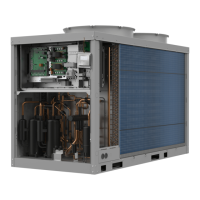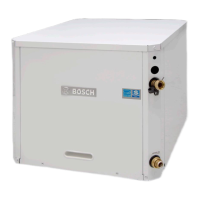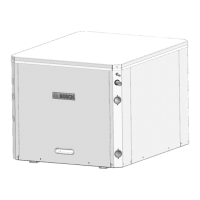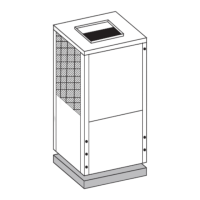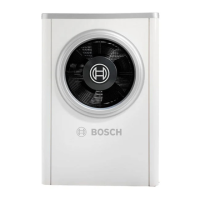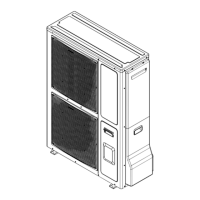Preparing for installation
Compress 5800i AW – 6721862724 (2023/06)
8
Unsuitable water can damage the heat exchanger or cause a fault in the
heat generator or DHW supply!
Unsuitable or contaminated water can lead to sludge formation,
corrosion or scaling. Unsuitable antifreeze or hot water additives
(inhibitors or anti-corrosion agents) can damage the heat generator and
heating system.
▶ Only fill the heating system with potable water. Do not use well or
groundwater.
▶ Determine the water hardness of the filling water, before filling the
system.
▶ Flush the heating system prior to filling.
▶ If magnetite (iron oxide) is present, anti-corrosion measures are
required and the installation of a magnetite separator and a de-airing
valve in the heating system is recommended.
▶ The limit values in table 3 must not be exceeded, even if national
directives contain higher limits.
Table 3 Boundary conditions for potable water (filling water)
▶ Check the pH value after > 3 months of operation. Ideally at the first
service.
Table 4 pH value ranges after > 3 months of operation
▶ Treat the fill and top up water according to the instructions in the
following section.
Depending on the hardness of the filling water, the system water volume
and the maximum heat output of the heat generator, water treatment
may be required to avoid a damage in water heating installations, due to
the formation of lime scale.
Requirements on the fill and top-up water
Fig. 8 Heat generators < 50 kW-100 kW
[x] Total hardness in °dH
[y] Maximum possible water volume over the service life of the heat
source in m
3
[1] Above the curve, only use desalinated fill and top-up water, with a
conductivity of ≤ 10 μS/cm
[2] Below the curve, untreated fill and top-up water according to
drinking water regulation can be used
For systems with a specific system water content >40 l/kW, water
treatment is mandatory. If there are several heat generators in the
heating system, then the system water volume must be related to the
heat generator with the lowest output.
Table 5 Water hardness unit conversion
A recommended and approved method for water treatment is
desalination of the fill and top-up water to a conductivity of ≤ 10 μS/cm.
Prevention of corrosion
In most cases, corrosion plays only a minor role in heating systems.
However, a precondition for this is that the system is a corrosion-sealed
water heating installation. This means that there is practically no access
of oxygen to the system during operation.
Continuous introduction of oxygen leads to corrosion and can thus cause
rusting and rust sludge formation. Sludge formation can not only cause
blockages and therefore a diminished heat supply but also deposits
(similar to lime scale deposits) on the hot surfaces of the heat exchanger.
The amount of oxygen introduced by the fill- and top-up water are
generally very small and can therefore be ignored.
To avoid oxygenation, connection pipes must be diffusion-tight!
The use of rubber hoses should be avoided.
The intended connection accessories should be used in the installation.
During operation, pressure maintenance with regard to oxygen ingress
and in particular the function, correct sizing and correct setting (pre-
Water quality Unit Value
Conductivity μS/cm ≤ 2500
pH ≥ 6,5... ≤ 9,5
Chloride ppm ≤ 250
Sulphate ppm ≤ 250
Sodium ppm ≤ 200
Material of heat
generator
Heating water pH value range
Copper brazed
heat exchangers
•Untreated potable water
•Fully softened water
7.5
1)
– 10.0
1) If pH value is < 8.2 an on-site test for ferrous corrosion is necessary
• Low-salt operation < 100 μS/
cm
7.0
1)
– 10.0
Water hardness unit conversion
°dH °e °fH ppm mmol/l
1°dH= 1 1,25 1,8 17,8 0,1783
1°e= 0,798 1 1,4 14,3 0,142
1°fH= 0,56 0,7 1 10 0,1
1 ppm
CaCO3
(USA)
0,056 0,07 0,1 1 0,01
1mmol/l= 5,6 7,02 10 100 1
0010048707-001
0,00
0,20
0,40
0,60
0,80
1,00
1,20
1,40
1,60
1,80
2,00
2,20
2,40
2,60
2,80
3,00
0 5 10 15 20 25 30
x
y
< 50 kW
< 100 kW
1
2
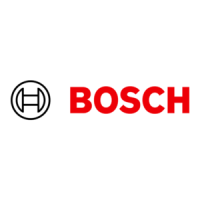
